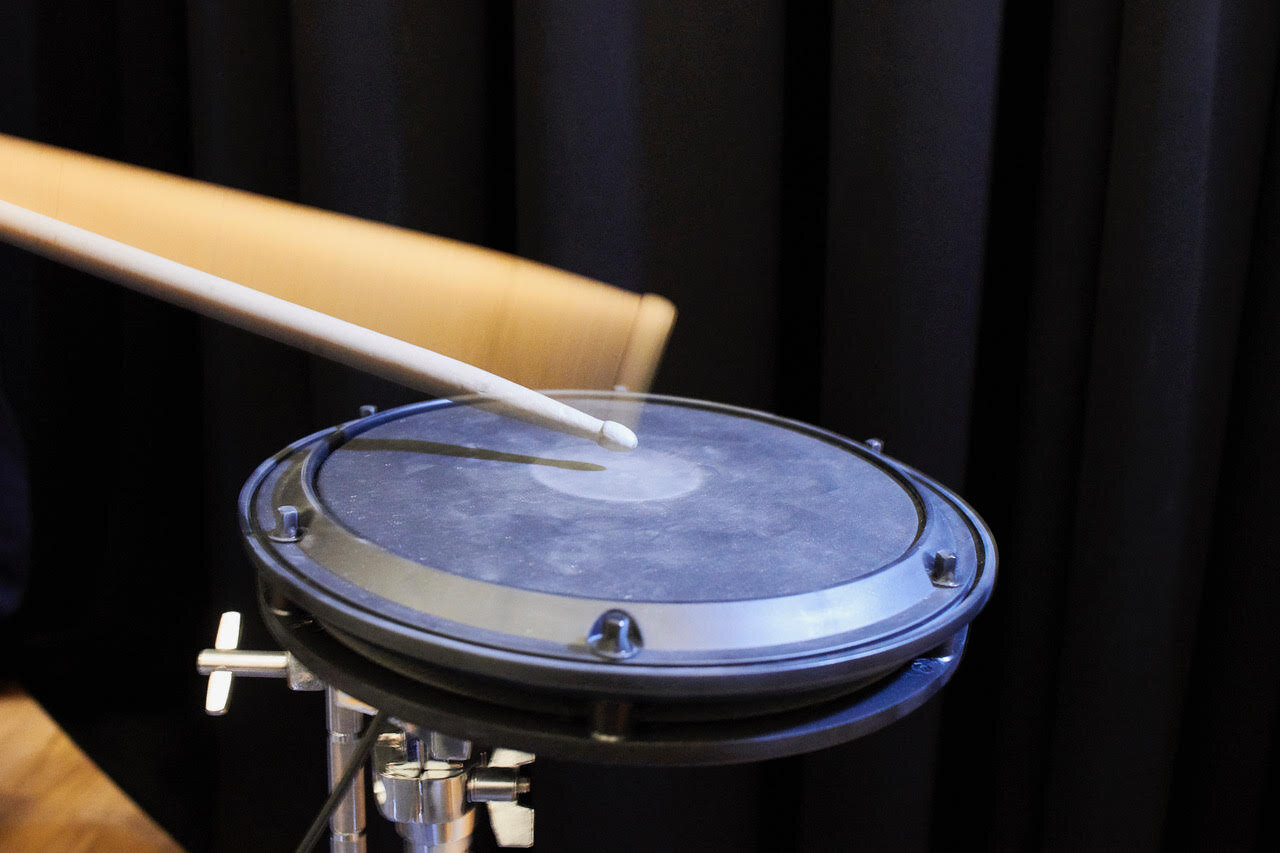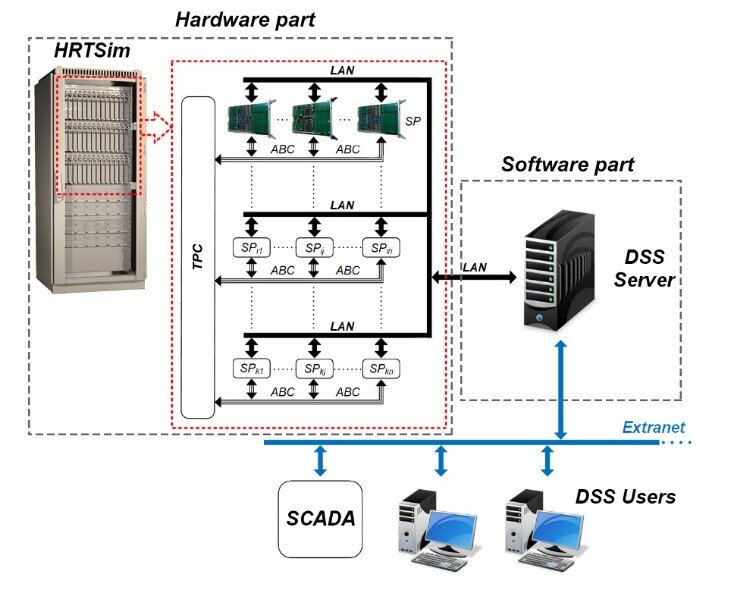#In test, zaps to spine help 2 stroke survivors move arms
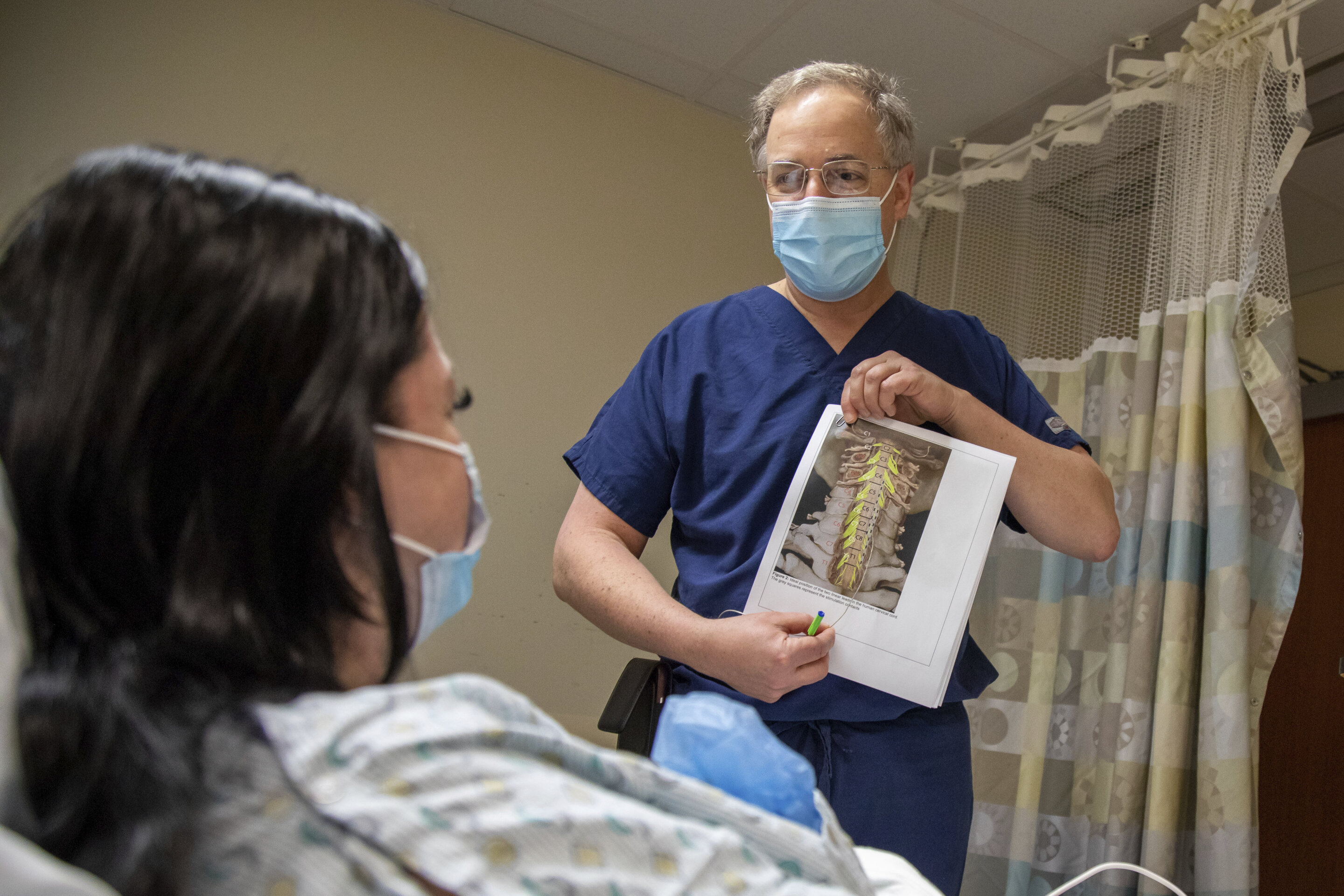
Table of Contents
“In test, zaps to spine help 2 stroke survivors move arms”

A stroke left Heather Rendulic with little use of her left hand and arm, putting certain everyday tasks like tying shoes or cutting foods out of reach.
“I live one-handed in a two-handed world and you don’t realize how many things you need two hands for until you only have one good one,” the Pittsburgh woman told The Associated Press.
So Rendulic volunteered for a first-of-its-kind experiment: Researchers implanted a device that zaps her spinal cord in spots that control hand and arm motion. When they switched it on, she could grasp and manipulate objects—moving a soup can, opening a lock and by the end of the four-week study, cutting her own steak.
It’s not a cure—the improvements ended after scientists removed the temporary implant—and the pilot study included only Rendulic and one other stroke survivor. But the preliminary results, published Monday, mark a step toward one day restoring mobility for this extremely common type of paralysis.
“They’re not just getting flickers of movement. They’re getting something important,” said Dr. Jason Carmel, a Columbia University neurologist who wasn’t involved with the new experiment but also studies ways to recover upper-limb function. “It’s a very exciting proof of concept.”
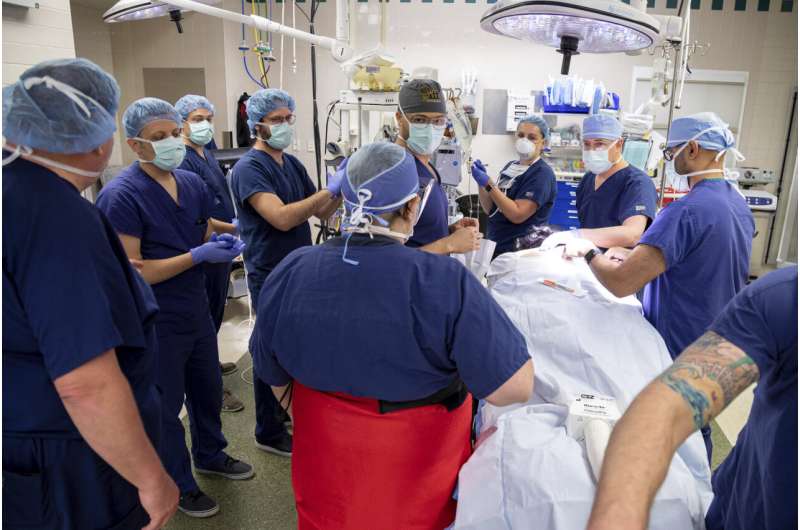
Nearly 800,000 people in the U.S. alone suffer a stroke each year. Even after months of rehabilitation, well over half are left with permanently impaired arm and hand function that can range from muscle weakness to paralysis.
Experiments by multiple research groups have found that implanting electrodes to stimulate the lower spine shows promise for restoring leg and foot movement to people paralyzed after a spinal cord injury—some have even taken steps.
But upper-limb paralysis has gotten little attention and is inherently more challenging. The brain must signal multiple nerves that control how the shoulder lifts, the wrist turns and the hand flexes. Stroke damage makes it harder for those messages to get through.
“People still retain some of this connection, they’re just not enough to enable movement,” said University of Pittsburgh assistant professor Marco Capogrosso, who led the new research with colleagues at Carnegie Mellon University. “These messages are weaker than normal.”
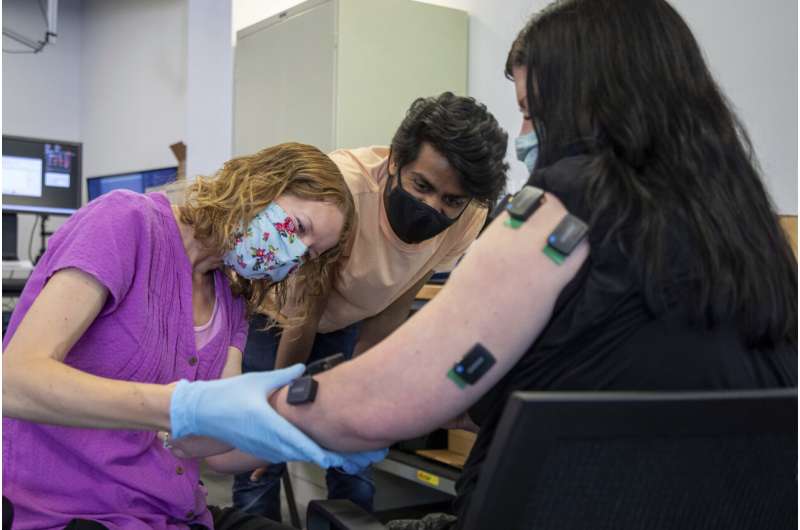
His idea: Stimulate a pathway of related nerve cells so they’re better able to sense and pick up the brain’s weak signal.
“We’re not bypassing their control. We’re enhancing their capabilities to move their own arm,” he said.
Researchers turned to implants the size of spaghetti strands that already are used to stimulate the spine for chronic pain treatment. The implants carry electrodes that are placed on the surface of the spinal cord to deliver pulses of electricity to the targeted nerve cells—which for hand and arm control are in the spine’s neck region.
Rendulic and a second, more severely impaired volunteer could move better as soon as the stimulator was switched on—and by the study’s end showed improved muscle strength, dexterity and range of motion, researchers reported Monday in the journal Nature Medicine. Surprisingly, both participants retained some improvement for about a month after the implants were removed.
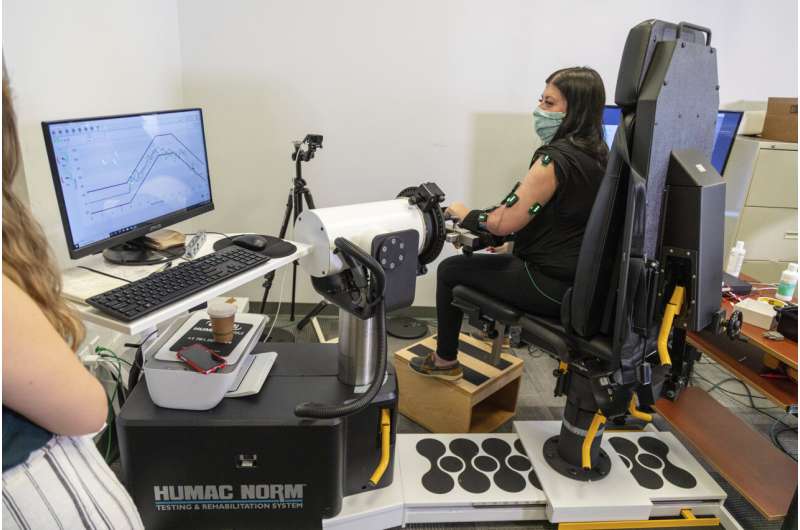
Rendulic, now 33, was performing some fine-motor tasks for the first time since suffering a stroke in her 20s. That unusually young stroke, caused by weak blood vessels that bled inside her brain, initially paralyzed her entire left side. She learned to walk again but—with the exception of those four weeks with spinal stimulation—cannot fully open her left hand or completely raise that arm.
“You feel like there’s a barrier between your brain and your arm,” Rendulic said. But with the stimulation on, “I could immediately sense that, like, oh my arm and hand are still there.”
Two other researchers who helped pioneer experiments stimulating the lower limbs of people with spinal cord injuries say it’s logical to now try the technology for stroke.
While bigger and longer studies are needed, the new results “are really promising,” said Mayo Clinic assistant professor Peter Grahn.
-
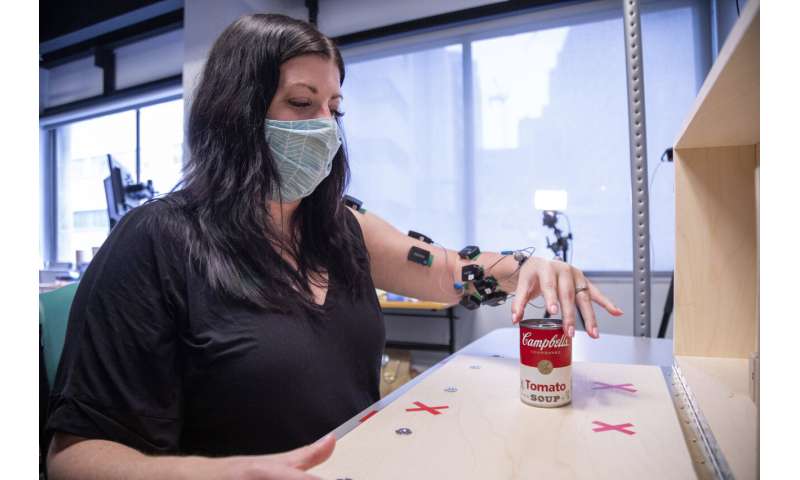
In this photo provided by UPMC and Pitt Health Sciences, research participant Heather Rendulic prepares to grasp and move a can of soup at the Rehab Neural Engineering Labs of the University of Pittsburgh on May 24, 2021. A stroke left Rendulic with little use of her left hand and arm, so she volunteered for a first-of-its-kind experiment that stimulates her spinal cord in spots that control upper limb motion. Credit: Tim Betler/UPMC and Pitt Health Sciences via AP
-
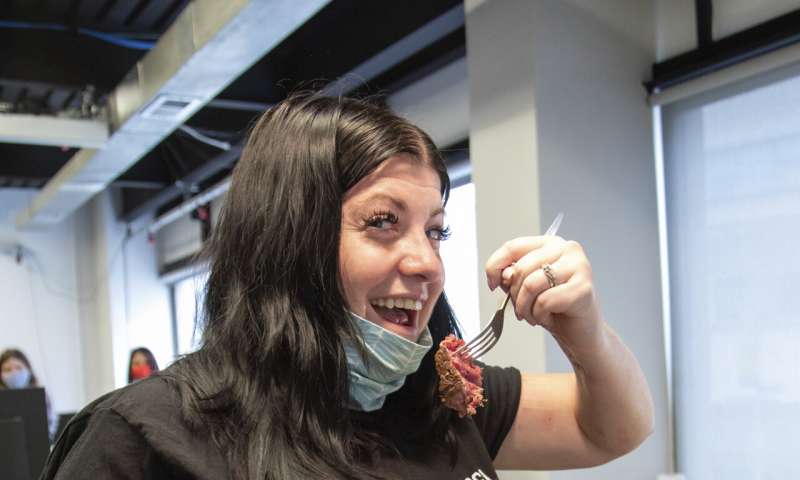
In this photo provided by UPMC and Pitt Health Sciences, research participant Heather Rendulic cuts and eats a piece of steak for the first time since recovering from a series of strokes in 2012, at Pitt’s Rehab Neural Engineering Lab in Pittsburgh on June 6, 2021. A stroke left Rendulic with little use of her left hand and arm, so she volunteered for a first-of-its-kind experiment that stimulates her spinal cord in spots that control upper limb motion. Credit: Tim Betler/UPMC and Pitt Health Sciences via AP
Scientists have learned from research with lower limbs that “it may not matter where that injury occurs, if it’s something in the brain or it’s a spinal cord injury,” added University of Louisville professor Susan Harkema. “Targeting the human spinal cord circuitry has a lot of potential.”
With National Institutes of Health funding, Capogrosso is studying the approach in a few more stroke survivors. The researchers also have formed a company to further develop the technology.
More information:
Marco Capogrosso, Epidural stimulation of the cervical spinal cord for post-stroke upper-limb paresis, Nature Medicine (2023). DOI: 10.1038/s41591-022-02202-6. www.nature.com/articles/s41591-022-02202-6
© 2023 The Associated Press. All rights reserved. This material may not be published, broadcast, rewritten or redistributed without permission.
Citation:
In test, zaps to spine help 2 stroke survivors move arms (2023, February 25)
retrieved 25 February 2023
from https://medicalxpress.com/news/2023-02-zaps-spine-survivors-arms.html
This document is subject to copyright. Apart from any fair dealing for the purpose of private study or research, no
part may be reproduced without the written permission. The content is provided for information purposes only.
If you liked the article, do not forget to share it with your friends. Follow us on Google News too, click on the star and choose us from your favorites.
For forums sites go to Forum.BuradaBiliyorum.Com
If you want to read more Like this articles, you can visit our Science category.

